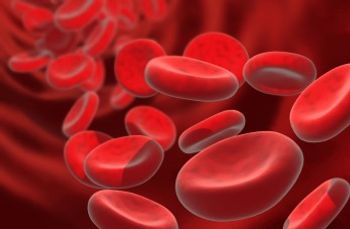
Second-Line Treatment Options Rapidly Expanding for Patients with ITP
Though steroids currently remain the standard frontline treatment for patients with immune thrombocytopenia, second-line treatment options for this patient population are rapidly expanding.
Though steroids currently remain the standard frontline treatment for patients with immune thrombocytopenia (ITP), Ivy P. Altomare, MD, indicated that the arsenal in the second-line setting is rapidly expanding.
"Fortunately, ITP, being a chronic and rare disease, has a plethora of exciting and effective therapies that do not cause long-term immunosuppression and are well tolerated,” explained Altomare. “Moreover, patients can stay on [these treatments] for a prolonged period of time with excellent quality of life.”
In this setting, the thrombopoietin (TPO) receptor agonists – eltrombopag (Promacta), romiplostim (Nplate), and avatrombopag (Doptelet) – in particular have demonstrated success. All 3 are approved for patients with ITP who have an insufficient response to corticosteroids, immunoglobulins, or splenectomy.
“The first line of treatment for patients with ITP is steroids; that is unlikely to change. Steroids are effective in most patients; however, most patients will relapse. Durable responses to steroids only occur in about 30% of patients after 2 years,” said Altomare. “As such, most patients will need a second-line option relatively soon in their treatment course.”
Currently, there are not effective clinical predictors or biomarkers to inform which therapy should be used and in what sequence; however, Altomore indicated that there are many effective therapies available.
“TPO receptor agonists have demonstrated very high response rates in patients with chronic ITP, and they do not cause long-term immunosuppression,” Altomare said. “We have 3 agents in this class that are approved by the FDA: eltrombopag, romiplostim, and avatrombopag. Treatment selection is based on patient preference, physician experience, and payers, but all of these agents are very effective.”
In addition, fostamatinib disodium hexahydrate (fostamatinib; Tavalisse), which is an oral spleen tyrosine kinase (Syk) inhibitor, has also proven effective in certain patients. The agent works by targeting the Syk pathway and inhibiting the macrophage phagocytosis of autoantibody-coated platelets. In an abstract presented at the 2019 ASH Annual Meeting, investigators even found that using fostamatinib in earlier lines of therapy can lead to strong response rates.
Even further, novel classes of agents, such as neonatal Fc receptor (FcRn) inhibitors, BTK inhibitors, and low dose decitabine, are being investigated in ongoing clinical trials, explained Altomare. In particular, Altomare explained that FcRn inhibitors, such as efgartigimod (ARGX-113) and rozanolixizumab (UCB7665), have shown particular promise.
“There is a lot of buzz with this class of agents. The FcRn pathway is a key pathway in preserving intact immunoglobulin and recycling it,” said Altomare. “Inhibiting the pathway is a potent way to degrade an IgG molecule. These classes of drugs are effective in autoimmune diseases, particularly in ITP.”
However, even with the addition of these agents, challenges regarding diagnosis and management of patients with highly refractory disease still require additional research and development in this disease space.
“Managing patients with ITP can be very challenging for a number of reasons. Making the initial diagnosis can be challenging because we do not have a singular test to reliably tell us that a patient has ITP,” Altomare said. “Instead we rely on clinical diagnosis.”
Patients with highly refractory ITP are a challenging cohort of patients to treat, according to Altomare. Additionally, patients who have ITP and active bleeding or a strong risk of bleeding and a blood clot are particularly challenging as well.
Overall, Altomare explained that though ITP is generally a chronic disease that will relapse and remit throughout a patient’s lifetime, it is generally a disease that patients can live with.
“There is a risk of serious bleeding. The [worst-case scenario] is spontaneous intracerebral hemorrhage (ICH); however, the rate is quite low,” said Altomare. “Fortunately, if a patient's platelets are able to be maintained in a safe range, ITP is not fatal. We now have many effective therapies that [prevent] serious bleeding and ICH and also reduce the long-term immunosuppression of historical therapy.”
This article was adapted from an article originally posted on
Newsletter
Stay up to date on recent advances in the multidisciplinary approach to cancer.
















































































